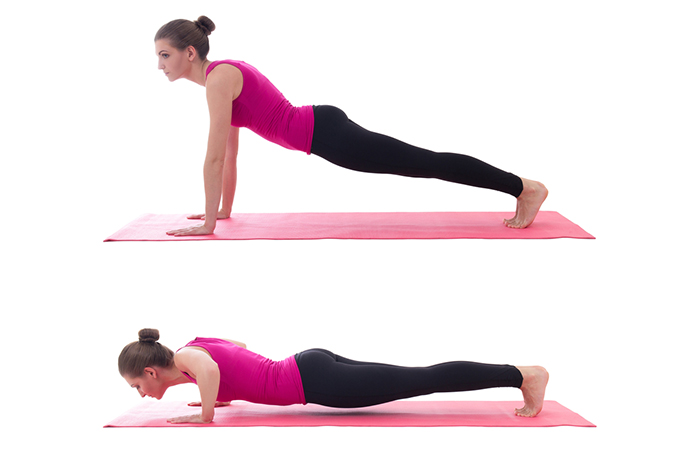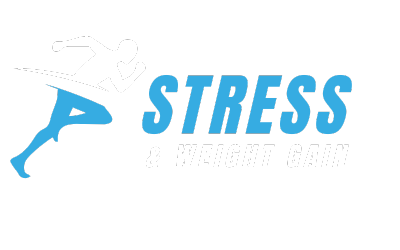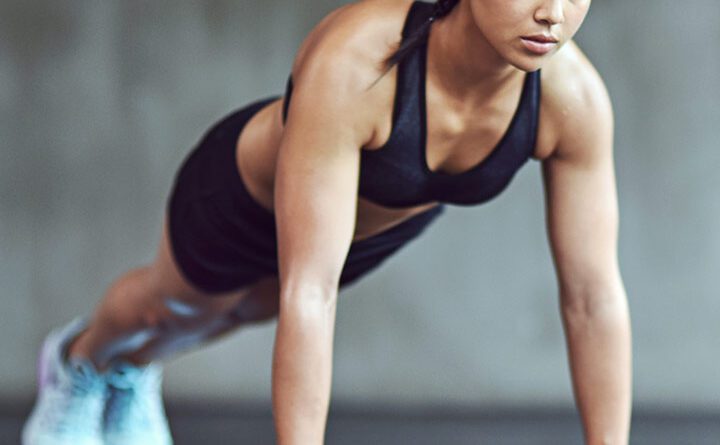The Best Exercises To Fight Stress And Keep Weight Gain At Bay
Do you ever find yourself feeling stressed out and reaching for unhealthy snacks or skipping out on exercise? Well, you’re not alone. Stress can take a toll on our overall well-being and can even lead to weight gain. But fear not, because there are exercises out there that can help combat stress and keep those extra pounds from creeping up on you.
In this article, you’ll learn about some of the best exercises to fight stress and keep weight gain at bay. We’ll explore how exercise can help manage stress levels and why it’s important for maintaining a healthy weight. Whether you’re a gym enthusiast or prefer to get active outdoors, we have tips and suggestions for everyone. So get ready to bust that stress and work towards a healthier, happier you. Stay tuned for more information in the article ahead! Are you feeling overwhelmed by stress and struggling to maintain a healthy weight? Look no further than exercise to help you combat these challenges. Not only does exercise reduce stress, but it also helps manage weight, improves mental health, and increases energy levels. In this article, we will explore the different types of exercises you can incorporate into your routine to reap these benefits.

Benefits of Exercise
Reduces Stress
One of the most significant benefits of exercise is its ability to reduce stress. When you engage in physical activity, your body releases endorphins, also known as the “feel-good” hormones. These endorphins act as natural stress relievers, helping to improve your mood and reduce anxiety. Whether you’re going for a jog, hitting the gym, or practicing yoga, regular exercise can help alleviate stress and promote a sense of calmness and well-being.
Helps Manage Weight
Another key advantage of exercise is its role in weight management. Regular physical activity helps burn calories, making it easier to maintain a healthy weight or shed extra pounds. By incorporating cardiovascular exercises and strength training into your routine, you can increase your metabolism, which enables you to burn more calories even at rest. Additionally, exercise can help build lean muscle mass, which is essential for maintaining a healthy body composition and preventing weight gain.
Improves Mental Health
Exercise is not only beneficial for your physical health but also for your mental well-being. Studies have shown that regular exercise can improve symptoms of depression and anxiety. Engaging in physical activity boosts the production of endorphins, dopamine, and serotonin, which are neurotransmitters associated with feelings of happiness and improved mood. Additionally, exercise promotes better sleep quality, enhances cognitive function, and reduces the risk of mental health disorders.
Increases Energy Levels
If you often find yourself feeling tired and lacking energy, exercise can help invigorate you. While it may seem counterintuitive to use energy to gain energy, regular physical activity has been found to boost energy levels. Exercise increases blood flow, delivering oxygen and vital nutrients throughout the body, which can help combat fatigue and improve overall stamina. Moreover, engaging in physical activity stimulates the release of endorphins, providing a natural energy boost.
Types of Exercise
Understanding the various types of exercise can help you design a well-rounded and effective workout routine. Let’s explore some of the most popular types of exercises:
Cardiovascular Exercises
Cardiovascular exercises, also known as aerobic exercises, are activities that increase your heart rate and improve cardiovascular health. These exercises are excellent for burning calories, enhancing endurance, and strengthening the heart and lungs. Some popular cardiovascular exercises include:
Running
Running is a simple yet effective way to get your heart pumping and burn calories. Whether you choose to run outdoors or on a treadmill, this activity can help improve cardiovascular health and increase overall fitness level.
Cycling
Cycling is a low-impact exercise that can be enjoyed both indoors on a stationary bike or outdoors on a bicycle. Whether you prefer a leisurely ride or an intense cycling session, this activity is excellent for strengthening the lower body muscles and improving cardiovascular endurance.
Swimming
Swimming is a fantastic full-body workout that is gentle on the joints. It engages all major muscle groups while providing a low-impact cardiovascular exercise. Whether you’re swimming laps or participating in water aerobics, this activity offers numerous benefits for both physical and mental health.
Dancing
Dancing is not only a fun and enjoyable activity but also a great way to get your heart rate up. From Zumba to hip-hop, there is a dance style for everyone. Dancing helps burn calories, improve coordination, and uplift your mood.
Strength Training
Strength training, also known as resistance training, involves using external resistance, such as weights or resistance bands, to build strength and muscle mass. Contrary to popular belief, strength training is not just for bodybuilders. It offers a range of benefits for individuals of all fitness levels, including:
Builds Lean Muscle Mass
Strength training exercises help build lean muscle mass, which not only improves physical appearance but also increases overall strength and functionality. Having more muscle mass can also contribute to a higher metabolism, allowing you to burn more calories even at rest.
Increases Metabolism
As mentioned earlier, strength training can boost your metabolism. The more muscle mass you have, the more calories you burn throughout the day. This can be particularly beneficial if you are trying to lose weight or maintain a healthy body composition.
Enhances Bone Density
Strength training is beneficial for bone health as it helps stimulate bone growth and increases bone density. This is especially crucial for individuals at risk of osteoporosis or age-related bone loss.
Improves Body Composition
Strength training exercises target specific muscle groups, allowing you to sculpt and tone your body. By incorporating compound exercises that work multiple muscle groups simultaneously, you can achieve an improved body composition and increased muscle definition.
Yoga and Meditation
Yoga and meditation are practices that have been used for centuries to promote physical, mental, and spiritual well-being. They offer a wide range of benefits, including stress reduction, increased mindfulness, improved flexibility, and relaxation.
Reduces Stress and Anxiety
Yoga and meditation are renowned for their stress-relieving benefits. The combination of mindful movement, deep breathing, and meditation helps calm the mind and relax the body, reducing stress and anxiety.
Increases Mindfulness
Mindfulness, the practice of being fully present in the moment, is a key component of both yoga and meditation. By focusing on your breath, body sensations, and thoughts, you can cultivate mindfulness, which can have a positive impact on your overall well-being.
Improves Flexibility
Yoga involves various poses and stretches that promote flexibility and joint mobility. Regular practice can help improve range of motion, prevent injury, and enhance athletic performance.
Promotes Relaxation
The combination of gentle movements, deep breathing, and relaxation techniques in yoga and meditation promotes a state of relaxation and tranquility. This can help reduce insomnia, improve sleep quality, and promote overall relaxation.
Pilates and Tai Chi
Pilates and Tai Chi are two low-impact exercises that focus on body awareness, balance, and core strength. They offer numerous benefits, including improved posture, increased core muscle strength, enhanced balance, and a mind-body connection.
Improves Posture
Both Pilates and Tai Chi emphasize proper alignment and posture. By practicing these exercises regularly, you can strengthen the muscles that support good posture, leading to improved spinal alignment and reduced back pain.
Strengthens Core Muscles
Pilates, in particular, is known for its focus on core muscle strength. The exercises in Pilates target the muscles of the abdomen, lower back, and pelvic floor, creating a strong and stable core.
Enhances Balance
Tai Chi, often described as “meditation in motion,” involves slow, flowing movements that challenge balance and coordination. By practicing Tai Chi, you can improve your balance, stability, and overall body control.
Promotes Mind-Body Connection
Both Pilates and Tai Chi emphasize the mind-body connection. These exercises encourage mindfulness, body awareness, and focus, allowing you to be fully present in the movements and experience a sense of harmony between your mind and body.

Recommended Pilates Exercises
If you’re interested in incorporating Pilates into your exercise routine, here are a few recommended exercises:
The Hundred
The Hundred is a classic Pilates exercise that targets the core muscles. It involves lying on your back with your legs raised and arms by your sides. From this position, you pulse your arms up and down while engaging your abdominal muscles, creating a challenging core workout.
Roll-up
The Roll-up is an exercise that strengthens the abdominal muscles and improves flexibility. Starting in a lying position with your arms overhead, you roll your body up into a seated position, articulating through each vertebra.
Single-leg Circles
This Pilates exercise targets the core and hip muscles. Lie on your back, extend one leg up toward the ceiling, and make circles with your leg while engaging your core stability.
Plank
The Plank is a full-body exercise that primarily targets the core and upper body muscles. To perform this exercise, start in a push-up position and hold your body parallel to the ground, engaging your abdominal muscles and keeping a straight line from your head to your heels.
Benefits of Tai Chi
Let’s explore some of the benefits of practicing Tai Chi:
Reduces Stress
Similar to other forms of exercise, Tai Chi helps reduce stress and promote relaxation. The slow, flowing movements combined with deep breathing create a calming effect on the body and mind.
Improves Flexibility
Tai Chi involves gentle, fluid movements that promote flexibility and joint mobility. Regular practice can improve range of motion, reduce muscle stiffness, and enhance overall flexibility.
Enhances Cardiovascular Health
While Tai Chi is a low-impact exercise, it still offers cardiovascular benefits. The continuous, controlled movements improve circulation, increase heart rate variability, and promote heart health.
Promotes Better Sleep
If you struggle with insomnia or sleep disturbances, Tai Chi may be able to help. The relaxation techniques and deep breathing in Tai Chi can calm the mind and promote better sleep quality.

Popular Tai Chi Movements
Here are a few popular Tai Chi movements you can incorporate into your practice:
Cloud Hands
Cloud Hands is a Tai Chi movement that involves flowing arm movements and shifting weight from side to side. It helps improve balance, coordination, and overall body awareness.
Brush Knee
The Brush Knee movement focuses on weight shifting, coordination, and leg strength. It involves stepping forward or backward while simultaneously brushing the knee with the opposite hand.
Grasp the Sparrow’s Tail
Grasp the Sparrow’s Tail is a series of movements that enhance coordination, balance, and flexibility. It consists of fluid arm and leg movements combined with weight shifting.
White Crane Spreads Its Wings
White Crane Spreads Its Wings is a graceful movement that promotes leg strength, balance, and flexibility. It involves extending one leg in front while simultaneously opening the arms to the sides.
Designing an Exercise Routine
Now that you’re familiar with the different types of exercises, it’s essential to design an exercise routine that suits your preferences and goals. Here are some tips to help you get started:
Set Realistic Goals
Identify your fitness goals and set realistic expectations. Whether you aim to lose weight, improve cardiovascular endurance, or enhance flexibility, having clear goals can help you stay motivated and focused.
Choose Activities You Enjoy
Select exercises that you genuinely enjoy. If you don’t enjoy running, try cycling or swimming instead. By choosing activities you find enjoyable, you’re more likely to stick with them long-term.
Create a Schedule
Establish a regular exercise schedule and stick to it. Consistency is key when it comes to reaping the benefits of exercise. Block off specific times in your calendar for physical activity, and treat it as you would any other important commitment.
Including Rest Days
Don’t forget to include rest days in your exercise routine. Resting is just as important as exercising, as it allows your body to recover and repair. Overtraining can lead to burnout and increased risk of injury, so listen to your body and take rest days when needed.

Tips for Sticking to an Exercise Routine
Maintaining an exercise routine can be challenging, but with these tips, you can stay on track:
Start Small and Gradually Increase Intensity
If you’re new to exercise or returning after a break, start with shorter sessions and low-intensity workouts. As your fitness level improves, gradually increase the duration and intensity of your workouts to continue challenging your body.
Find a Workout Buddy
Exercising with a friend or family member can make your workouts more enjoyable and help keep you accountable. Having someone to share your fitness journey with can provide motivation and support.
Track Your Progress
Keep a record of your workouts to track your progress. Note down the exercises you perform, the duration, and any improvements you notice. Tracking your progress can boost motivation and help you stay committed to your routine.
Reward Yourself
Don’t forget to celebrate your achievements along the way. Set small milestones and reward yourself when you reach them. Treat yourself to something you enjoy, whether it’s a massage, a new workout outfit, or a day off.
Conclusion
Regular exercise is a powerful tool for managing stress, maintaining a healthy weight, and improving overall well-being. By incorporating different types of exercises into your routine, such as cardiovascular exercises, strength training, yoga, and Tai Chi, you create a well-rounded approach to your fitness journey. Remember to set realistic goals, choose activities you enjoy, design a schedule, and include rest days to ensure long-term success. Stay consistent, keep track of your progress, and reward yourself along the way. By making exercise a part of your routine, you can reap the numerous physical and mental benefits it offers. So, lace up your sneakers, grab a yoga mat, or find a Tai Chi class near you, and get ready to fight stress and keep weight gain at bay through the power of exercise.


